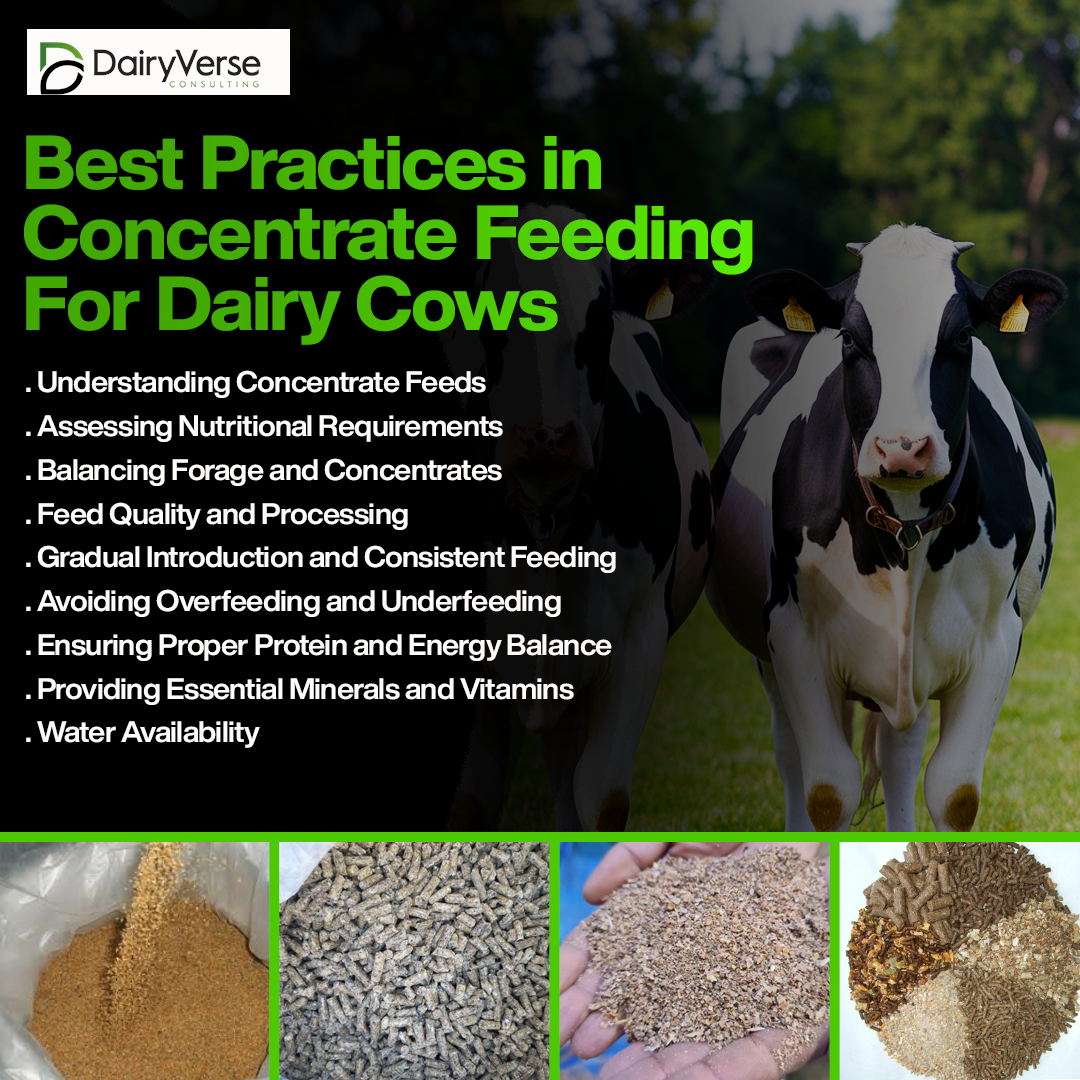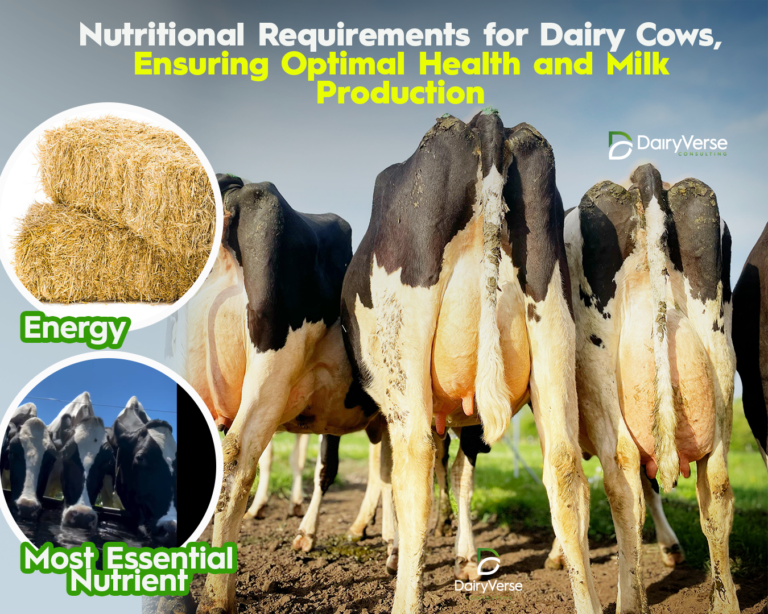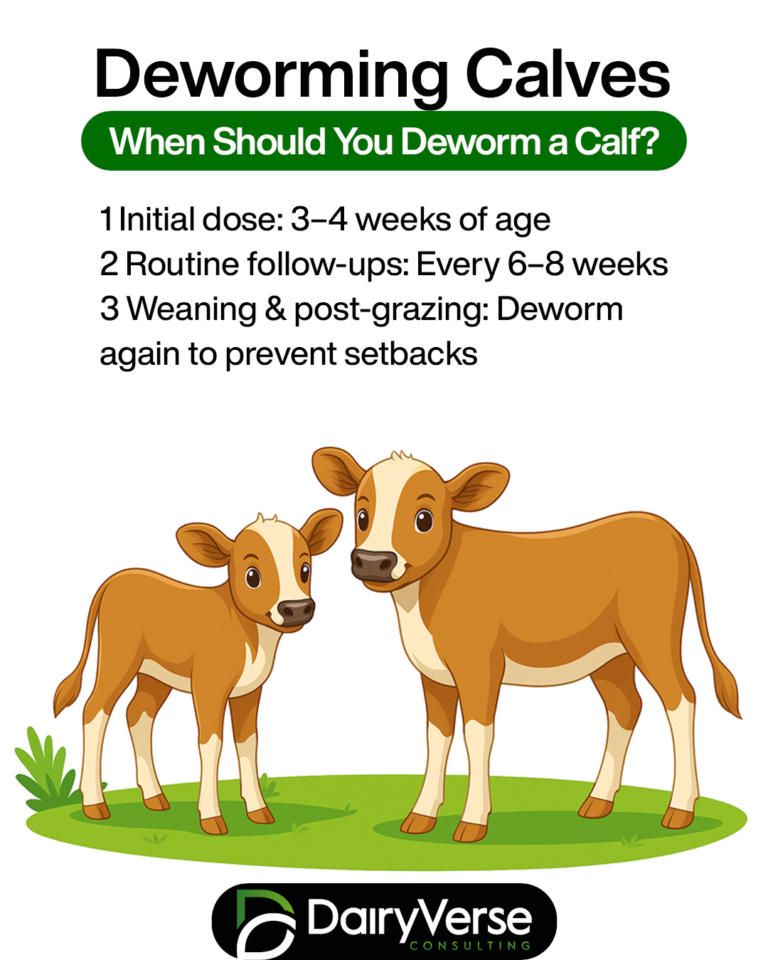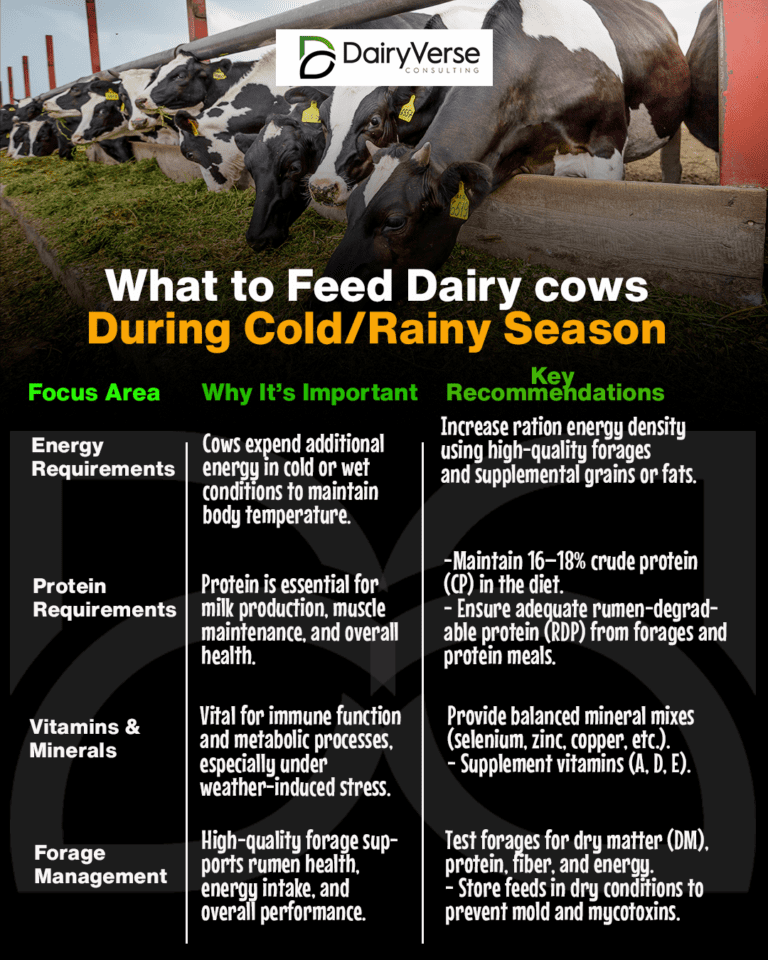Best Practices in Concentrate Feeding for Dairy Cows
Proper concentrate feeding is crucial in dairy farming, as it directly impacts milk production, cow health, and overall farm profitability. Concentrates provide essential nutrients that forage alone may not supply in sufficient quantities. Below are the best practices to ensure optimal results in dairy cow concentrate feeding.
1. Understanding Concentrate Feeds
Concentrates are high-energy feeds that provide essential nutrients like carbohydrates, proteins, fats, vitamins, and minerals. They are typically classified into:
- Energy concentrates – e.g., maize, wheat bran, molasses
- Protein concentrates – e.g., soybean meal, cottonseed cake
- Mineral and vitamin supplements – e.g., calcium, phosphorus, salt
2. Assessing Nutritional Requirements
The concentrate requirements depend on factors such as:
- Milk production level – High-yielding cows require more concentrates.
- Body weight – Larger cows need more energy.
- Stage of lactation – Early lactation demands more nutrients to sustain milk production.
- Health status – Sick or recovering cows may require specific nutrients.
A balanced ration should meet the cow’s energy, protein, and mineral needs while avoiding deficiencies or excesses.
3. Balancing Forage and Concentrates
- Forage (pasture, silage, hay) should be the foundation of a dairy cow’s diet.
- Concentrates should complement forage, not replace it.
- An ideal ratio is 60-70% forage and 30-40% concentrate in a total mixed ration (TMR).
- Overfeeding concentrates can cause acidosis, laminitis, and reduced rumen function.
4. Feed Quality and Processing
- Use high-quality grains and oilseeds free from toxins, molds, and contaminants.
- Processing (e.g., grinding, pelleting, or flaking) enhances digestibility and nutrient absorption.
- Avoid finely ground grains as they can increase rumen acidity.
5. Gradual Introduction and Consistent Feeding
- Introduce concentrate feeds gradually over 7–10 days to prevent digestive upsets.
- Maintain a consistent feeding schedule to avoid stress and milk fluctuations.
- Split concentrates into 2-3 feedings per day to reduce the risk of rumen disorders.
6. Avoiding Overfeeding and Underfeeding
- Overfeeding can lead to metabolic disorders, excessive weight gain, and low fertility.
- Underfeeding results in low milk production and poor body condition.
- Adjust feeding based on milk yield, weight changes, and feed intake patterns.
7. Ensuring Proper Protein and Energy Balance
- Dairy cows require 16-18% crude protein in their diet.
- Energy-rich feeds (e.g., maize) should be paired with fiber sources to maintain rumen health.
- Excess protein can lead to high ammonia levels, affecting fertility.
8. Providing Essential Minerals and Vitamins
- Calcium and phosphorus – Essential for milk production and bone strength.
- Magnesium – Prevents grass tetany.
- Sodium and chloride – Regulate body functions.
- Vitamins A, D, and E – Support immune function and reproduction.
- Offer mineral licks or supplement minerals in concentrates.
9. Monitoring and Adjusting Feed Based on Performance
- Observe milk yield, body condition, and manure consistency.
- Conduct regular feed analysis to check nutrient composition.
- Adjust feeding as needed, especially in response to seasonal changes.
10. Water Availability
- Cows require 60-120 liters of water daily, depending on milk yield.
- Fresh, clean water enhances feed digestion and milk production.
- Position water troughs close to feeding areas for easy access.
Conclusion
Proper concentrate feeding plays a vital role in optimizing milk production, maintaining cow health, and improving farm profitability. By balancing forage with quality concentrates, monitoring cow performance, and providing essential nutrients, dairy farmers can maximize efficiency and sustainability in dairy production.
By implementing these best practices, farmers can achieve higher milk yields, better cow health, and improved farm efficiency while minimizing the risk of metabolic disorders.







